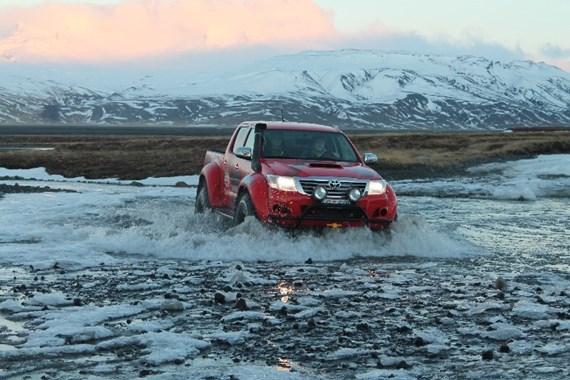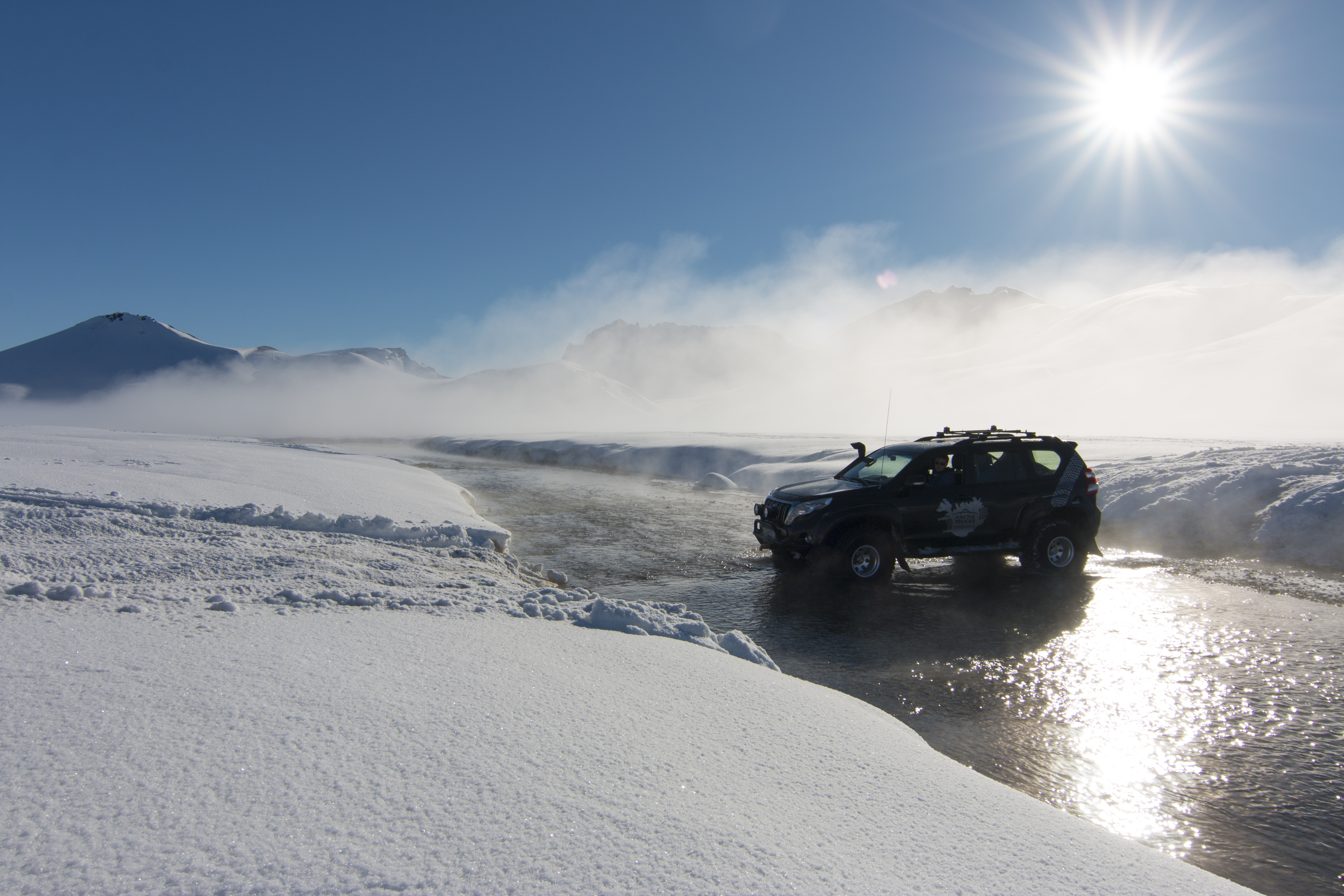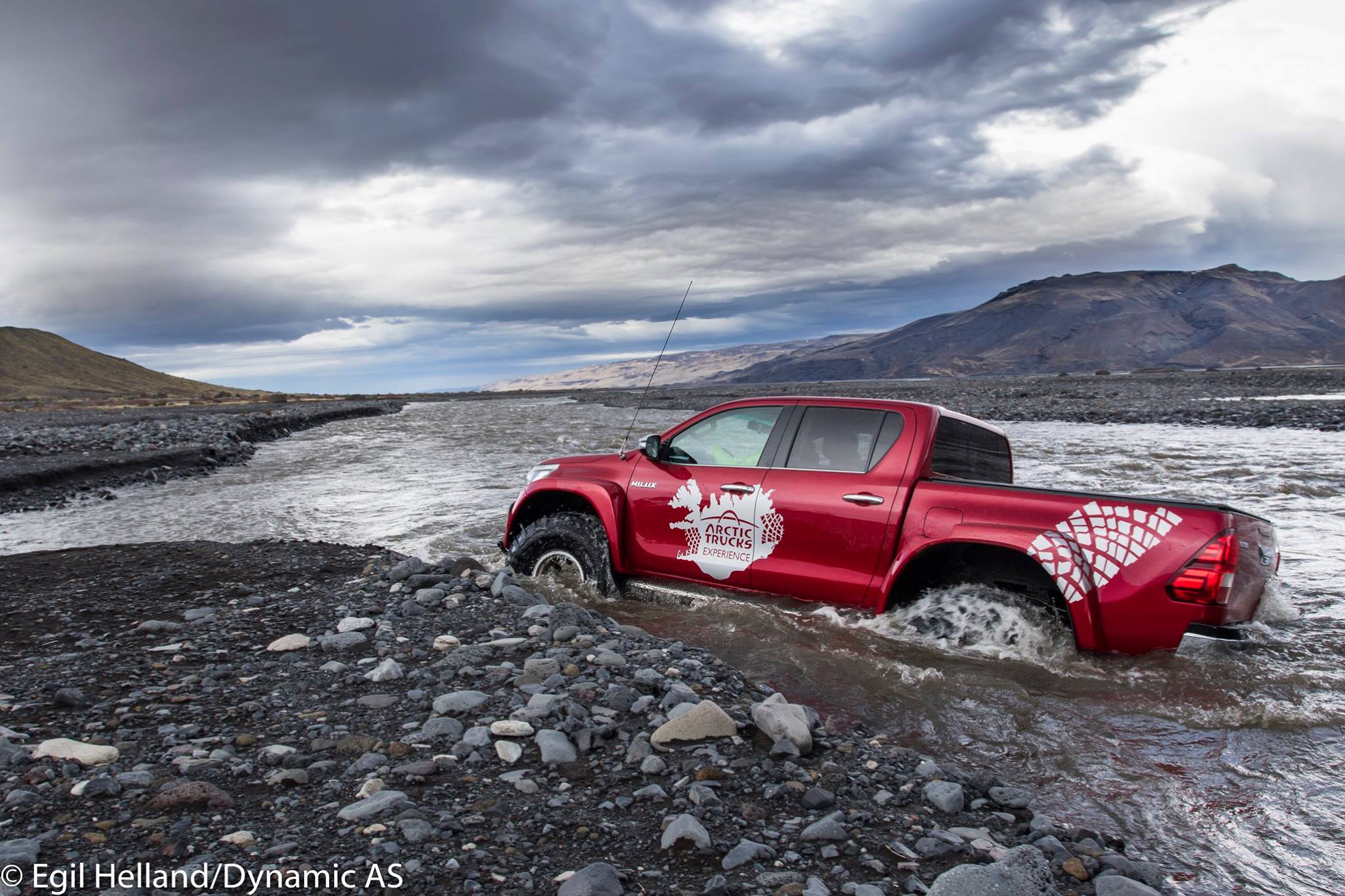The rivers in the highlands of Iceland are countless which makes it so much more fun to explore this beautiful area. Many of those rivers are unbridged so you need to know the basic techniques on how to cross them.
Here in Iceland we have three types of rivers and it is good to know which type you are dealing with. First of all, we have those that come from a glacier. These rivers are largest during the beginning of summer, when the ice is melting, but have a relatively heavy flow all year around. Next up, we have the rivers that come from a visible spring. They have a constant flow all year around and temperature stays the same at all times. Last but not least, we have the rivers that have no clear origin and it is like they form at the Earth’s surface. These rivers grow quickly in rain and freeze in the winter time.
Here are a couple of rules that you need to have in mind when crossing rivers:
1. Never drive up stream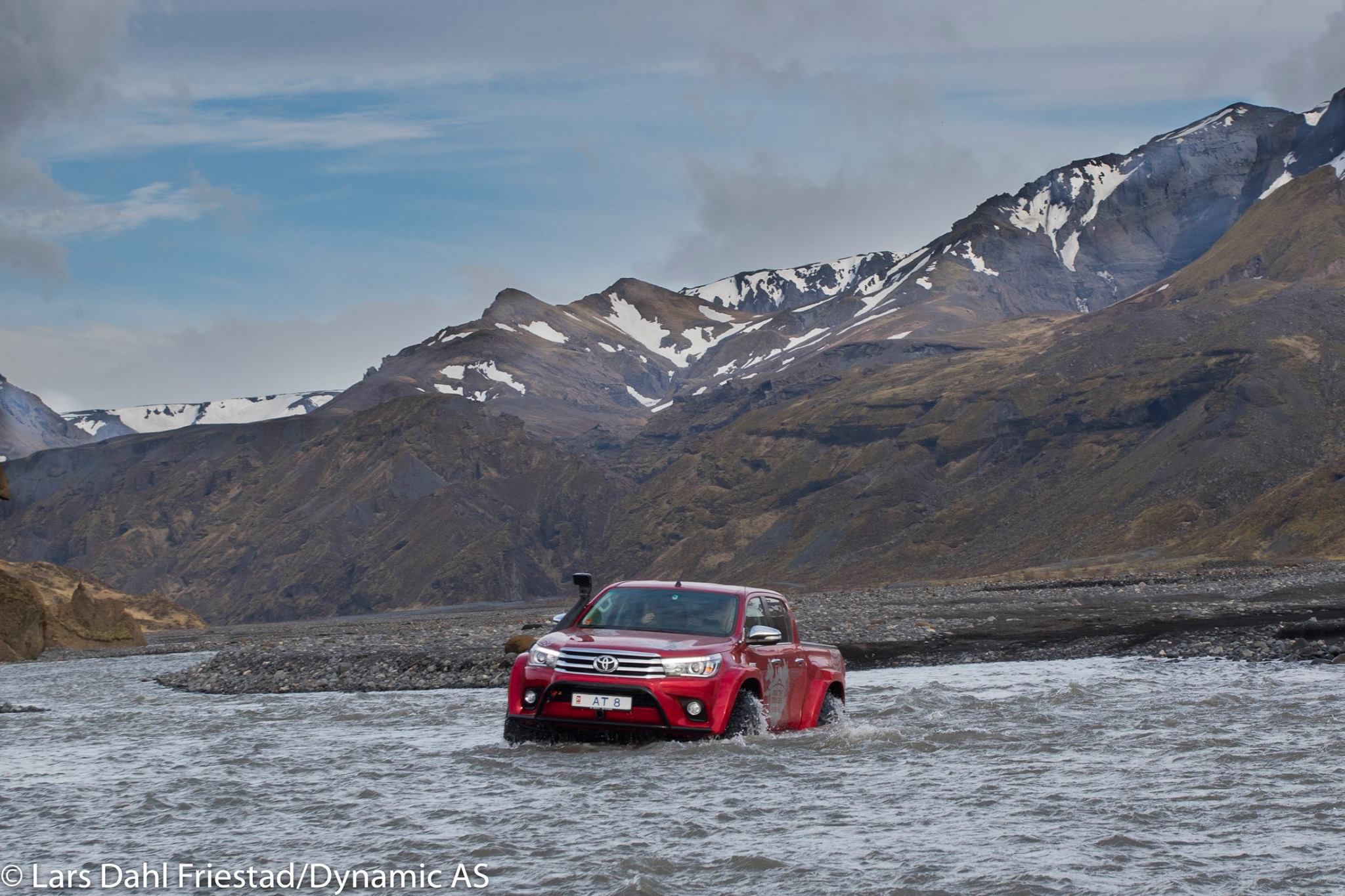
Driving up the stream is never a good idea, you should go with the flow. You get much better traction with less chance of you losing the control. By driving up against the stream also increases the chances of the water flowing up on the truck’s hood and in to the air intake, destroying the engine in the process.
2. Have your truck in the 4WD and low-range
Make sure the truck is in 4WD. By also having the truck in the low-range you increase the traction, adding to the torque and preventing the wheels from spinning to fast. You don’t want to spin the wheels in the water and lose the grip. You also want to avoid switching the gears in middle of the river.
3. Do not drive too fast and do not stop
Never drive too fast when crossing. By doing that the water can flow up in the air intake. It also increases the chance of you not seeing obstacles in your path, large rocks or uneven ground. You want to avoid driving into large rocks in the path as you could get stuck on them or damage your vehicle. You also want to avoid stopping the truck in the water. If you do, the truck could start to sink down into the ground and you will end up getting stuck.
4. Plan your route
You want to have a plan A, B and C when crossing rivers. Plan A is the route you aim on driving. You need to know where you want to dive in, what route you are going to be driving in the water and where you want to get out of the river. Play the scenario in your head and imagine what could possibly go wrong. Then you make a Plan B, in case that something happens and so you won’t be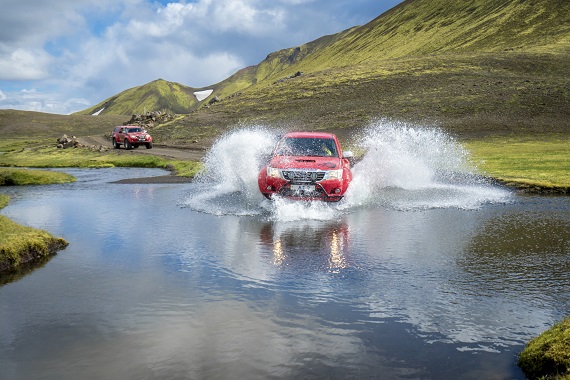
5. Read the river
When making your plans you need to map out where the river is deep and where it is shallow. You also want to know where the large rocks are and all the other possible obstacles. The worst place to cross the river is where the river looks most calm because that is where the river is deepest.
6. Don’t drive over if you are in doubt
The best rule of thumb is to not cross the river if you are not sure you will make it or if you are in doubt. You can wait for other trucks to cross the river first, so you see what is the best way to cross.
7. Do not drive off the road
On popular highland roads, the rivers are often marked where you should enter the river and where to get up. You should always enter the river where the road ends and continue on the road at the other side of the river.
Would you like to learn how to cross the Icelandic rivers? We recommend our Eyjafjallajökull and Þórsmörk tour where we cross many rivers on our way through the amazing Þórsmörk valley.
